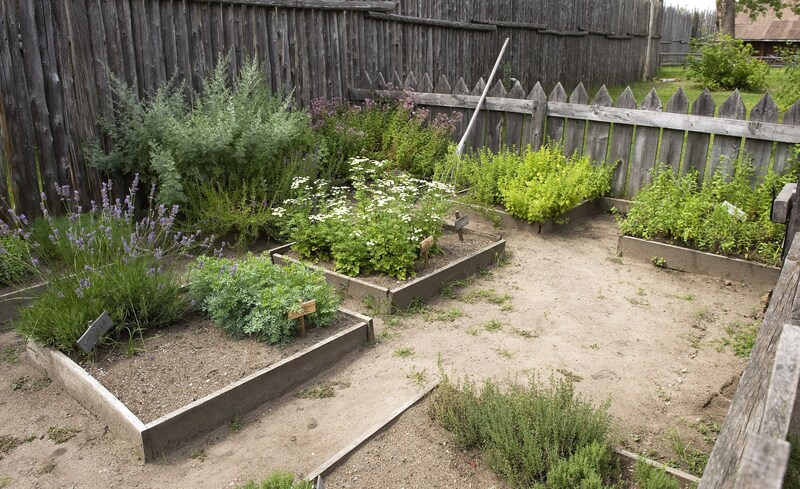Building Garden Fortitude: Techniques to Combat Strong Winds
Posted on 20/06/2025
Building Garden Fortitude: Techniques to Combat Strong Winds
Gardening in areas prone to strong winds can be a challenging yet rewarding endeavor. Whether you are a seasoned horticulturist or a novice eager to see your first blooms, understanding how to build a robust, wind-resistant garden is essential. This comprehensive guide will help you fortify your garden against powerful gusts, ensuring your plants not only survive but thrive amidst nature's fury. We'll dive into effective strategies, plant choices, construction methods, and maintenance tips to help you establish garden fortitude.
Understanding Wind's Impact on Your Garden
Before you begin reinforcing your garden, it's crucial to comprehend how wind affects it. Wind does more than just topple plants; it:
- Dries out soil and strips moisture from plant leaves, causing water stress.
- Reduces pollination due to fewer pollinators on windy days.
- Breaks stems, branches, and can uproot entire plants.
- Spreads pests and diseases by dispersing spores and insects.
- Creates unpredictable microclimates within your garden.
With these impacts in mind, building wind resilience (aka garden fortitude) becomes an essential part of your gardening strategy.

Site Assessment: First Step in Wind-Proofing Your Garden
Every successful wind-resistant garden starts with a careful site assessment. Ask yourself:
- Which direction do the prevailing winds come from?
- Are there any natural windbreaks (hills, fences, buildings) already?
- Which parts of your garden are most exposed?
Mark these areas and plan where you can improve shelter or redirect wind flows. A good assessment will underpin all your efforts in building lasting garden fortitude.
Techniques to Build Wind-Resistant Gardens
Create Effective Windbreaks
Windbreaks are perhaps the most effective technique available to combat strong winds in your garden. They function as physical barriers that disrupt wind currents and protect vulnerable plants.
- Living Windbreaks: Plant rows of trees, shrubs, or tall grasses like Miscanthus, willows, or conifers. These absorb and deflect wind instead of blocking it entirely, which actually creates less turbulence than solid barriers.
- Artificial Windbreaks: Fences made of slatted wood, lattice, or mesh reduce wind speed effectively. Avoid solid walls, as they create strong turbulence on the leeward side.
- Stacked hay bales, reed screens, and even temporary fabric windbreaks offer quick solutions for new plantings.
Tips for Installing Windbreaks:
- Windbreaks should be perpendicular to prevailing winds.
- The ideal height is at least 1.5 to 2 meters (5-7 feet) for most gardens.
- Leave small gaps or use permeable materials to allow some wind through, reducing turbulence.
- Stagger multiple rows of plantings for greater effectiveness.
- Regularly prune and maintain living windbreaks for longevity and density.
Choose Wind-Resistant Plants
A key aspect of building garden fortitude is plant selection. Some species are naturally equipped to withstand high winds, while others are best avoided in exposed locations.
- Native plants are adapted to local wind conditions and climates.
- Low-growing, flexible plants such as lavender, thyme, rosemary, and juniper are more resilient than tall, brittle-stemmed varieties.
- Ornamental grasses like fountain grass, switchgrass, or blue fescue bend elegantly in the wind and provide aesthetic movement.
- Plants with deep taproots or fibrous root systems are less likely to uproot.
Plants to Avoid in Wind-Prone Areas:
- Broad-leafed tropicals like banana and canna lilies.
- Tall perennials with weak stems, like delphiniums or hollyhocks (unless staked and sheltered).
- Large-flowered, top-heavy species that become wind sails.
Selecting the right plants forms the backbone of any wind-resistant garden design.
Optimize Layout and Planting Techniques
The layout of your beds and the manner in which you plant can have a significant impact on your garden's wind fortitude.
- Group plants closely together, allowing them to support and shelter each other.
- Use taller, wind-hardy plants as living shields for more delicate species behind them.
- Curve or stagger garden beds instead of placing them in long straight lines, which channel wind.
- Mulch deeply to conserve soil moisture and weigh down the soil.
- Plant in raised beds with reinforced sides for added root protection in sandy or shallow soils.
Physical Supports and Anchoring Methods
Not all plants can withstand high winds without a little help. For especially vulnerable plants, use:
- Stakes and ties: Anchor young trees, tall perennials, and climbing vegetables with strong, flexible stakes and soft ties that do not cut into stems.
- Cages or frames: Surround tomatoes, peppers, and peas with support cages.
- Trellises anchored deep into the ground for climbing plants.
Check and adjust supports regularly, especially after storms. As the plants mature, reduce dependency to encourage natural resilience.
Soil Health and Moisture Management
Healthy soil is fundamental to garden fortitude against wind. Wind dries out soil and can erode top layers, stressing plants further.
- Add organic matter such as compost or well-rotted manure to improve water retention.
- Mulch with straw, bark, or gravel to insulate root zones.
- Install drip irrigation or soaker hoses for deep, consistent watering, reducing the need for frequent surface watering.
- Cover crops sown in the off-season protect bare soil from blowing away.
Long-Term Strategies for Wind Fortitude in Gardens
Developing Permanent Shelter
Over time, your garden wind protection can become more sophisticated. Consider:
- Building hedgerows of mixed trees and shrubs for year-round wind defense and wildlife habitat.
- Installing walls, pergolas, or arbors with open slats to serve as both design features and functional wind screens.
- Encouraging dense groundcovers to reduce dust and windborne debris.
These permanent structures integrate windbreaks with the beauty and utility of your entire landscape.
Adaptive Maintenance Practices
Gardens facing strong winds require regular monitoring and maintenance:
- Prune trees and shrubs for balanced shape and reduced wind resistance.
- Re-secure or replace supports and ties as plants grow.
- Amend soil annually to rebuild organic matter lost to drying winds.
- Reseed lawn and groundcover areas after wind damage to prevent bare soil erosion.
Consistent care ensures your wind-resistant garden evolves and improves over time.
Garden Design Ideas for Windy Sites
Here are a few creative design concepts to reinforce fortitude while maintaining an attractive garden aesthetic:
- Layered windbreaks: Combine tall trees, mid-sized shrubs, and low groundcovers for a natural wind buffer.
- Sunken or recessed beds: Lowering the soil surface by a few inches offers subtle protection to sensitive plants.
- Strategically placed boulders or sculptures further break up wind and provide artistic interest.
- Green walls, whether living or artificial, can shield patios and vegetable patches.
- Install edging and raised beds for better root protection and less wind exposure.
These approaches enhance both functionality and beauty while strengthening garden fortitude against harsh winds.
Best Plants for Windy Gardens
If you're wondering which plants are tried-and-tested against fierce gusts, consider these reliable choices:
- Grasses: Switchgrass (Panicum virgatum), miscanthus, and fescue
- Shrubs: Hebe, escallonia, Elaeagnus, viburnum, rosemary, lavender
- Trees: Hawthorn, mountain ash, pine, birch, willow
- Groundcovers: Creeping thyme, vinca, sedum, creeping juniper
- Flowers: Coreopsis, echinacea, yarrow, California poppy
Choose locally adapted varieties to maximize survival and ensure lush, wind-resistant growth.
Common Mistakes to Avoid When Building Garden Fortitude
- Using solid impenetrable walls or fences as windbreaks which increase turbulence and can worsen plant damage.
- Planting fragile, top-heavy species in the most exposed parts of your garden.
- Overwatering to "compensate" for wind dryness, leading to root rot and disease.
- Neglecting ongoing assessment and maintenance of windbreaks or plant supports.
Proactive Planning for Year-Round Wind Defense
Wind speeds and directions can change throughout the seasons. To maintain garden fortitude throughout the year:
- Observe and log seasonal wind patterns in your area.
- Reinforce vulnerable beds ahead of stormy months.
- Opt for seasonal plant diversity to maximize ecosystem resilience.
- Adjust windbreaks or install temporary screens as needed during peak winds.

Summary: Flourishing Despite Fierce Winds
To summarize, building garden fortitude in windy areas requires a multi-faceted approach:
- Assessment of site exposure and wind directions
- Installation of both living and artificial windbreaks
- Clever plant selection and garden design layout
- Soil health, irrigation, and mulching strategies
- Regular maintenance, adaptive supports, and year-round planning
By integrating these practical methods into your gardening practice, even the windiest sites can be transformed into lush, productive, and striking gardens. With garden fortitude, you can combat strong winds and create an outdoor space that endures--and flourishes--in the face of adversity.
Frequently Asked Questions: Garden Fortitude & Wind Resistance
- How tall should a windbreak be? Ideally, windbreaks should be at least 1.5-2 meters (5-7 feet) tall for home gardens, and their protective effect can extend up to 10-15 times their height downwind.
- Can fences replace living windbreaks? Permeable fences are effective but living windbreaks offer additional benefits like erosion control, habitat, and beauty.
- How can I protect young trees from wind? Stake them loosely but securely for the first few years and prevent rubbing at the trunk base.
- What's the quickest windbreak to establish? Tall ornamental grasses or fast-growing shrubs like willow or privet can offer shelter within 1-2 growing seasons.
- Is it possible to garden successfully in extremely windy locations? Absolutely, with planning and appropriate techniques as detailed above, garden fortitude can be built anywhere!
Armed with these techniques and insights, you can build a thriving, beautiful, and resilient garden--even when strong winds blow.
```
